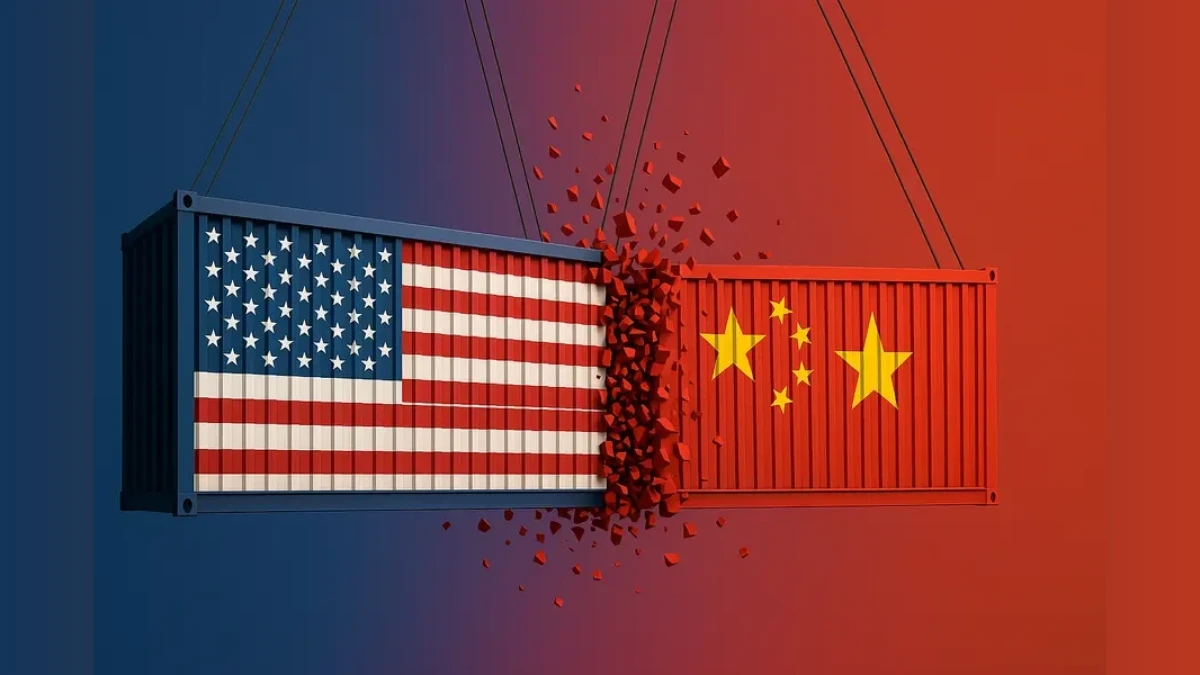
Transhipment, the practice of passing goods through third nations to get around direct trade prohibitions, is a major concern in the latest round of tariff threats from Washington. This is a significant backdoor for Chinese goods to enter the US market, which has an impact on ASEAN countries like Thailand and Malaysia as well as countries like South Korea and Canada that are closely linked to the US economy.
India is being examined as well. Experts caution that since India’s industries still rely significantly on Chinese imports, the US may use stringent “rules of origin” requirements to restrict the flow of Chinese goods into the US through India. This worry grew after US Vice President JD Vance subtly warned during his April trip to India that the US prefers partners that create together rather than those who operate as middlemen for transhipped commodities.
Trump Plans New Tariffs on Pharmaceuticals, Semiconductors, and Multiple Countries
Rising Trade with Both China and the US

India’s trade statistics reveal a careful balancing act. China’s imports increased 27.03% to $9.90 billion in April, while exports to the US increased 27.31% year over year to $8.41 billion. March had a similar pattern, with imports from China jumping 25.02% and exports to the US growing 35%. China’s imports increased to over $113 billion (up 11.52%) in FY25, while India’s exports to the US reached $86.51 billion (up 11.59%).
Indian exports to the US jumped 23.53% in June alone, while Chinese imports climbed only slightly by 2.48%. This occurs as India raises anti-dumping taxes on expensive Chinese goods, such as industrial equipment and steel.
U.S. Faces Potential Financial Crisis Ahead of 2026 Midterms, Expert Warns
The Struggle to Reduce Chinese Dependency

Even the US is finding it challenging to decouple from China, and India, which is trying to expand its manufacturing sector in order to generate jobs, is finding it even more challenging. India’s imports from China are still increasing even though it has opted out of the China-led Regional Comprehensive Economic Partnership (RCEP).
Long-standing problems including inadequate infrastructure and a lack of manufacturing experience exacerbate India’s hardship. In the meantime, Indian industries—from electronics to renewable energy—have been impacted by the prevalence of low-cost Chinese goods.
India and China Respond Differently as U.S. Tariff Reshape Global Trade
China’s Economic Imbalance and Global Impact

Global markets are still distorted by China’s export-driven economy, which is influenced by government subsidies and industrial overcapacity. The National University of Singapore’s Chen Gang emphasises how China’s economy is orientated more towards manufacturing than domestic consumption, leading to an excess of commodities. Chinese companies are compelled to actively pursue foreign markets due to this overcapacity, which is exacerbated by laws such as “dual circulation.”
Low domestic demand, excessive savings, problems in the real estate market, and a significant debt load have all plagued China’s economy since COVID-19. Beijing is currently being urged by economists to abandon its conventional, investment-heavy growth strategy and shift towards consumer-led growth.
